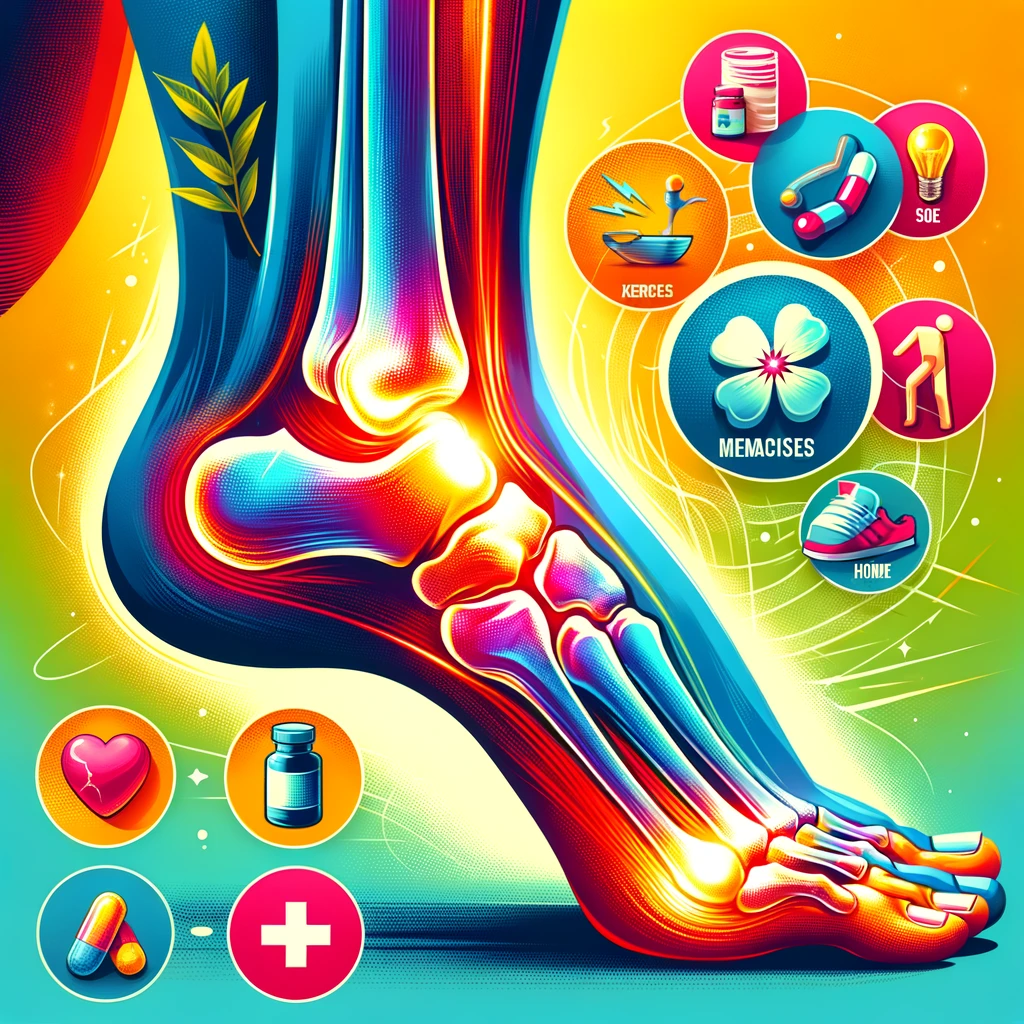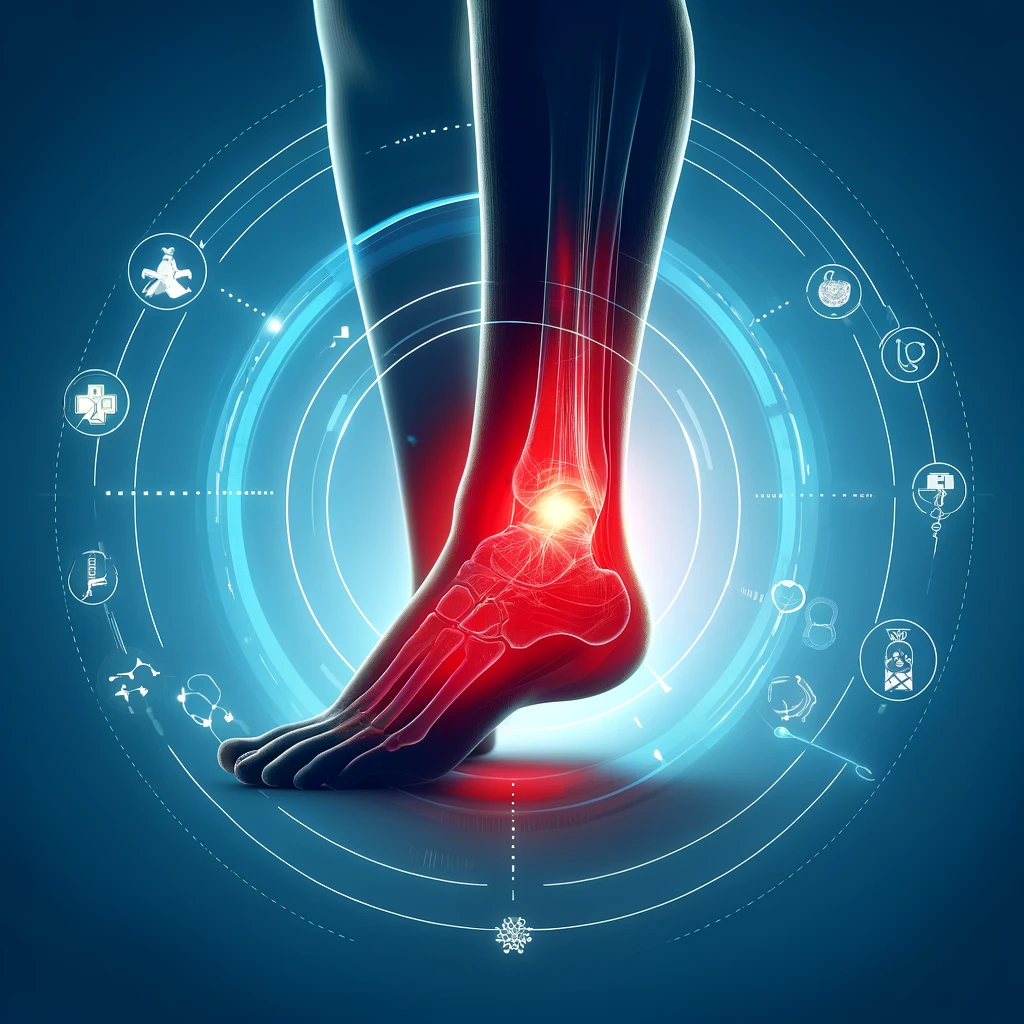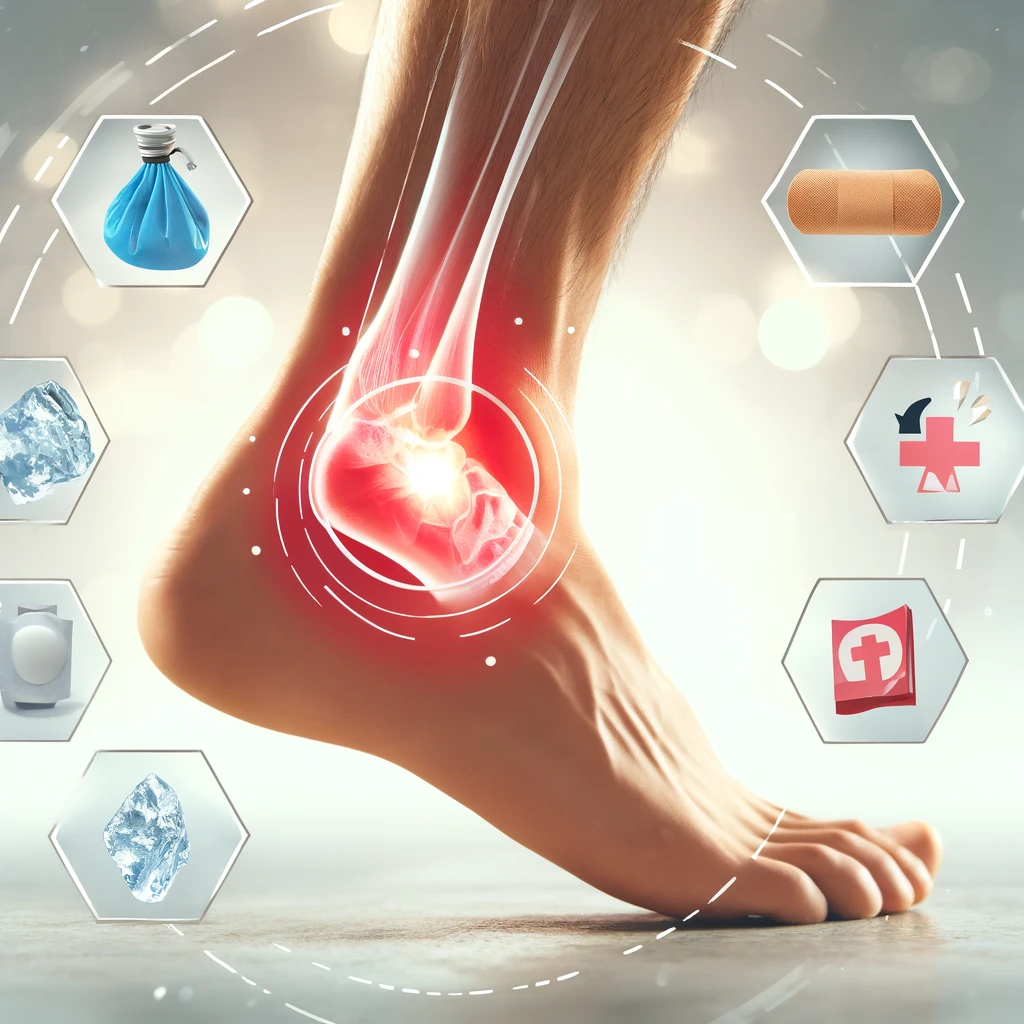
Table of Contents
Ankle pain is a common issue that affects people of all ages and activity levels. Whether it’s a sharp pain from a recent injury or a chronic ache due to an underlying condition, ankle pain can significantly impact your daily life. Addressing ankle pain effectively requires understanding its causes and exploring various remedies for ankle pain. Let’s dive into the numerous ways you can alleviate ankle pain and improve your overall well-being.
Understanding Ankle Pain
To effectively address ankle pain, it’s crucial to understand the ankle’s anatomy and the types of pain you might experience. The ankle is a complex joint made up of bones, cartilage, ligaments, and tendons. Pain can arise from any of these components, manifesting as either acute or chronic discomfort.
Over-the-Counter Remedies
Pain Relievers: Over-the-counter medications like ibuprofen and acetaminophen are commonly used to relieve ankle pain. These medications help reduce inflammation and alleviate pain, making them a go-to option for many sufferers.
Topical Treatments: Creams and gels containing menthol or capsaicin can be applied directly to the ankle for localized pain relief. These treatments work by numbing the area and reducing inflammation.
Physical Therapy and Exercises
Strengthening Exercises: Building strength in the muscles around the ankle can provide better support and reduce pain. Exercises like calf raises and ankle circles are particularly beneficial.
Flexibility and Stretching Routines: Stretching helps maintain flexibility in the ankle joint, preventing stiffness and discomfort. Yoga and specific stretching exercises can be highly effective.
Low-Impact Activities: Activities like swimming and cycling are excellent for maintaining fitness without putting excessive strain on the ankles. These exercises keep the joints moving without causing further pain.
Home Remedies for Ankle Pain
R.I.C.E. Method: Rest, Ice, Compression, and Elevation (R.I.C.E.) is a time-tested method for reducing swelling and pain after an injury. Applying ice packs and elevating the ankle can be particularly effective.
Herbal Remedies: Certain herbs, such as turmeric and ginger, have anti-inflammatory properties that can help reduce ankle pain. Incorporating these herbs into your diet or taking them as supplements can provide relief.
Heat and Cold Therapy: Alternating between heat and cold packs can help reduce pain and inflammation. Heat helps relax muscles, while cold reduces swelling.
Diet and Nutrition
Anti-Inflammatory Foods: A diet rich in anti-inflammatory foods like fish, nuts, and leafy greens can help manage ankle pain. Omega-3 fatty acids, found in fish, are particularly beneficial.
Supplements for Joint Health: Glucosamine and chondroitin supplements can support joint health and reduce pain. These supplements help maintain cartilage and reduce inflammation.
Alternative Treatments
Acupuncture: This traditional Chinese medicine technique involves inserting thin needles into specific points on the body. Acupuncture can help alleviate ankle pain by stimulating the body’s natural pain-relieving mechanisms.
Massage Therapy: Regular massage can improve circulation, reduce muscle tension and alleviate pain. Focusing on the muscles around the ankle can provide significant relief.
Chiropractic Care: Chiropractic adjustments can help realign the body and reduce ankle pain. This treatment can be particularly effective if the pain is caused by misalignment or mechanical issues.
Lifestyle Changes
Weight Management: Maintaining a healthy weight reduces the strain on your ankles. Every pound of excess weight adds additional pressure on the ankles, exacerbating pain.
Proper Footwear: Wearing supportive shoes can prevent ankle pain by providing better alignment and reducing strain. Avoid high heels and opt for shoes with good arch support.
Ergonomic Adjustments: Making ergonomic adjustments to your work environment can reduce ankle pain. Ensure your chair and desk are at the proper height to avoid unnecessary strain.
Medical Treatments
Prescription Medications: For severe pain, doctors may prescribe stronger medications like opioids or anti-inflammatory drugs. These should be used under medical supervision to avoid side effects.
Injections: Corticosteroid injections can provide quick, temporary relief from ankle pain by reducing inflammation. Hyaluronic acid injections can help lubricate the joint, improving mobility.
Surgical Options: In extreme cases, surgery might be necessary. Procedures like arthroscopy can repair damaged tissue, while ankle replacement surgery can provide long-term relief for severe arthritis.
Preventing Ankle Pain
Injury Prevention Techniques: Learning proper techniques for sports and activities can prevent ankle injuries. This includes proper lifting techniques and using the right form during exercise.
Proper Warm-Up and Cool-Down: Always warm up before exercising and cool down afterward. This prepares your muscles and joints for activity and helps prevent injuries.
Protective Gear for Sports: Wearing ankle braces and supports during sports can protect your ankles from injury. This is particularly important for high-impact activities like basketball and running.
Impact of Ankle Pain on Daily Life
Ankle pain can significantly affect your daily life, leading to:
Mobility Issues: Difficulty walking, running or even standing for long periods.
Psychological Effects: Chronic pain can lead to stress, anxiety and depression, impacting your overall well-being.
When to See a Doctor
It’s crucial to seek medical attention if you experience:
- Persistent pain and swelling
- Signs of infection such as redness and warmth
- Loss of function or inability to bear weight on the ankle
Living with Chronic Ankle Pain
For those living with chronic ankle pain, managing the condition is essential. This includes:
Pain Management Strategies: Regular use of pain relief methods and maintaining a healthy lifestyle.
Support Systems and Resources: Joining support groups or seeking counseling can provide emotional support and practical advice.
Conclusion
Effectively addressing ankle pain involves a combination of understanding its causes, implementing home remedies, considering medical treatments and making lifestyle changes. By incorporating preventive measures like proper warm-ups, wearing supportive footwear and maintaining a healthy weight, you can reduce the risk of ankle pain. Regular physical activity and strength training can also help keep your ankles strong and flexible. Remember, if your ankle pain persists or worsens, it’s crucial to seek professional medical advice. By taking a proactive approach, you can manage your ankle pain and enjoy a healthier, more active life.
FAQs
What is the best over-the-counter remedy for ankle pain?
Ibuprofen and acetaminophen are commonly used to relieve ankle pain. Always follow the dosage instructions on the packaging.
Can exercise really help reduce ankle pain?
Yes, regular exercise strengthens the muscles around the ankle, providing better support and reducing pain.
Are there any natural remedies for ankle pain?
Yes, natural remedies like turmeric, ginger and the R.I.C.E. method can help alleviate ankle pain.
When should I consider surgery for ankle pain?
Surgery should be considered if other treatments have failed and ankle pain significantly impacts your quality of life.
How can I prevent ankle pain during sports?
Use proper techniques, wear protective gear and always warm up before engaging in sports activities.



